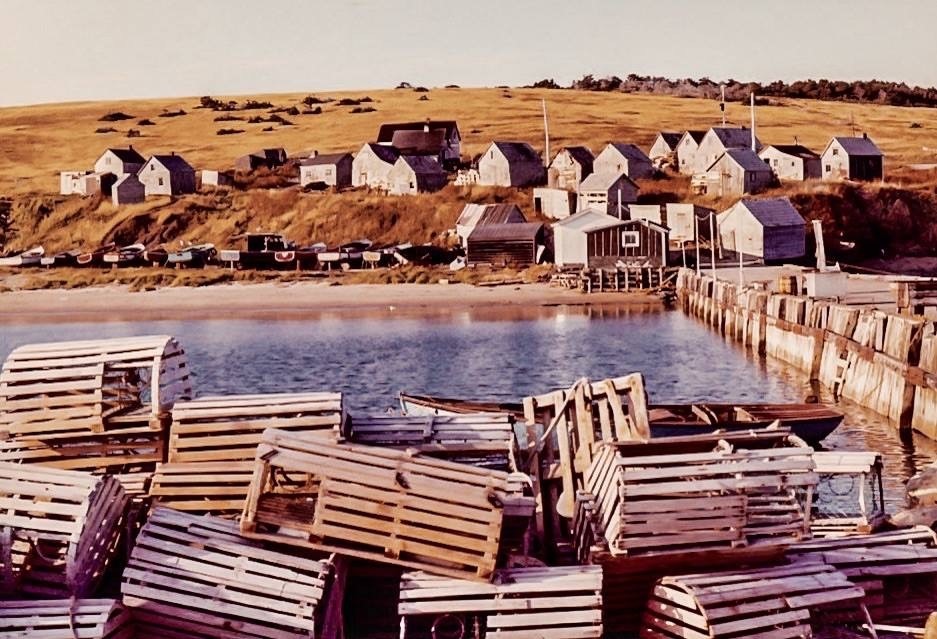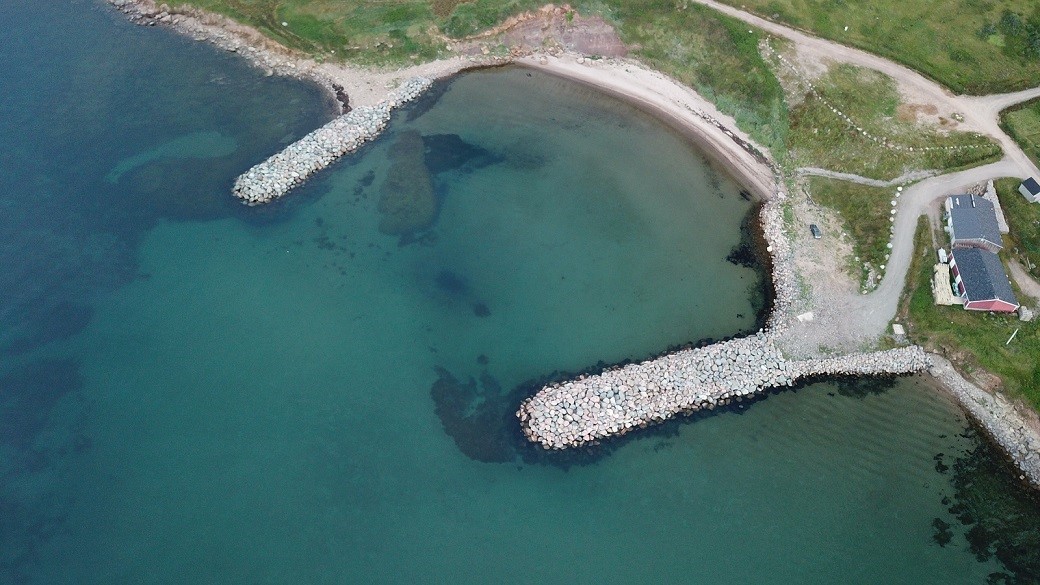Chéticamp’s role in the development of Atlantic Canada – the cooperative movement
The Maritime provinces have been shaped by moments in our past that have defined relationships, livelihoods and values of the east coast. We retain dramatic battles, such as the siege of the Fortress of Louisbourg, or significant hardships, such as the loss of the cod fisheries, but subtle aspects can get glazed over or lost as time moves on.
One such moment is Chéticamp’s role in creating the first fisheries cooperative in the Maritimes, and perhaps North America. Fully understanding this impact requires an understanding of the founding of the community itself.
Old Chéticamp
With the fall of the Fortress and the expulsion of Acadians in 1750s the French regime ended in Nova Scotia. The remaining Acadians were in hiding, the target of merciless manhunts by the British at that time and in the years that followed.
The area of what was to become Chéticamp was seasonally inhabited by the Mi’kmaq people, who continued to have a presence as the community developed. At times there were several seasonal camps operated in the area where cod was dried and processed by early European fishermen. The Robin Company, merchants from the Isle of Jersey in the English Channel, established a summer fishing station sometime around 1767, after having opened a successful fishing and transport operation to Europe on Isle Madame in 1765. This operation was on Chéticamp Island, in the area known as La Pointe, that held a natural harbour. As more Acadians were attracted to provide labour for this fishing operation, a year-round community sprung up in the area and the adjacent mainland where natural brooks provided easy access to fresh water. In 1785 the community was officially founded.

The original Chéticamp harbour at La Pointe, Chéticamp Island
Hardship
Although they had faced much hardship for many years, the new situation for Acadians in Chéticamp was similarly troublesome as the community had no economic dependence. Fishermen sold their cod to the fishing company but did not receive cash for their catch. Instead, they were given credit at the company store, where they obtained fishing equipment, clothing, food, drinks, tools and other items for domestic use. This was a type of “truck” system adopted to provide the Robin Company with long-term sustainability in exports. The purpose of their enterprise was not to bring wealth or development to Chéticamp, but to, as with other colonial practices, bring profit to the firm and wealth and development to the Isle of Jersey through the creation of a complex commodity exchange in which cod was the prime mover.
The relationship between the company and people was complex, and it is up for debate if the community could have survived in those formative years without the practices the company employed. What is clear is that people were very poor in Chéticamp and other communities within their Atlantic monopoly, and there was no means of stopping exploitation of this new and growing community for almost a century.
Cooperative Movement
These conditions eventually led to the first co-operative movement for the sale of fish in the Maritimes (and possibly North America) in 1915, when a group of determined community fishermen laid the foundation for economic liberation, and provided the inspiration for later movements across the Atlantic seaboard.
The operation was known as le Petite Factorie at La Pointe. It was started by Severin Lefort, Placide Lefort, Emilien Lefort, Pat Lefort Macillin Doucet, and Elie Doucet. Others later joined. The business was modest, and included use of the government wharf, a shed, office, and the construction of a new lobster factory.
This operation worked on simple principles – join together to work and cover expenses required to process fish, organize the sale of fish to foreign markets, and share the profits among shareholders.
Implications for Atlantic Canada
This first fisheries cooperative, along with the first co-operative consumer store in Stellarton and an early consumer co-operative in Sydney Mines fueled inspiration for early cooperative thinking and further academic research. The modern cooperative sector grew during the 1920s and 1930s as the Antigonish Movement at St. Francis Xavier University, led by Cape Breton born Father Jimmy Tompkins and Father Moses Coady, assisted local fishers, farmers, forestry workers, and coal miners to start consumer, agricultural, and financial co-operatives. It cannot be understated how important and far reaching this work was in the development of eastern industries and communities from 1930 onward.
In 1933, a second Chéticamp fisheries cooperative formed, and in 1936 the Chéticamp Credit Union opened its doors. By this time, Coady and Tompkins had arrived in the community, and cooperative study clubs began meeting weekly around kitchen tables. Several more cooperatives soon followed in the community and throughout Atlantic Canada as a result of this research and collaborative thinking. In Nova Scotia alone the cooperative movement today is made up of 290 organizations, with 44,734 members with a total revenue of $733 million, and is an important part of the provincial economy, social fabric and overall way of life in both urban and rural communities.

Early picture of the members of Antigonish Movement at St. Francis Xavier University
Chéticamp is uniquely placed within the cooperative movement. In a rural community of around 4,000 people, the current 7 or more active cooperative organizations provide over 300 jobs, making up a significant proportion of the overall economy, and contributing to its status as one of the most prosperous communities in Cape Breton, if not Nova Scotia. This strong collaborative foundation has shaped the values of people over time, providing structure to help find consensus on emerging issues such as the shortage of low-income housing and the impacts, positively and negatively, of tourism development. Although the community is remote and prone to outside influences sometimes beyond their control, it still can benefit greatly from hearing from the voices of many when it comes to making the best decisions for the community.

Conference of the cooperative movement, Cheticamp, 1947
La Pointe Today
The place where it all started, the founding of the community and first cooperative on Chéticamp Island is but a shadow of what it once was. When a new, more sheltered, harbour on the mainland was created with dredging operations in 1874, community development gradually shifted from the area. The first cooperative lasted for 25 years until membership amalgamated with another community cooperative established later.

Aerial view of the La Pointe wharf property.
A once bustling port for large Europe-bound cargo vessels, and fishing operations that included canneries, stores and homes, La Pointe is now a tranquil place of reflection; the place of fond memories and compelling stories. The last of the original fishing shacks was removed just a few years ago. The wharf, beach, and cliffs are a popular destination for tourists and locals to watch fishing boats, seabirds, seals, whales, and catching the last glimpse of the sun as it dips into the tranquil ocean.
.jpg)
The tranquility of the La Pointe property today.
Members of this first cooperative likely did not realize the implications their actions would have on the future economic and social development of this region, but demonstrated great courage, working to move things forward into new territory for the betterment of their community. These early trailblazers deserve to be recognized for the imprint they have left on Atlantic Canada, and for the lasting legacy they left to the people of Chéticamp, which should never be forgotten.
Thank you to everyone who contributed to this article, including Andre Bourgeois who has been a champion for Cheticamp Island and Kevin Camus for some of these amazing photos.
Chris Bellemore is a blogger working to understand and share the important stories Cape Breton Island has to offer. Do you hold a part of the story?
Related articles:
Swordfish in Louisbourg: https://capebreton.lokol.me/what-louisbourg-was-know-for-swordfishing
Cape Breton lobster: https://capebreton.lokol.me/the-lobster-food-for-thought
The WW2 plane on top of Jerome Mountain, Cape Breton: https://capebreton.lokol.me/the-ww2-plane-on-top-of-jerome-mountain-cape-breton
The last schooner in Margaree: https://capebreton.lokol.me/the-last-schooner





0
Log In or Sign Up to add a comment.- 1
arrow-eseek-eNo items to displayFacebook Comments